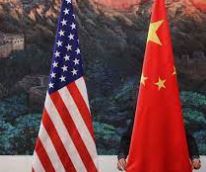How Did the Chinese Communist Party Come to Power In China?
The Chinese Communist Party (CCP) came to power in China in 1949, after a long and complex series of events, including several decades of political turmoil, civil war, and international conflict. Here is a brief overview of the key events that led to the establishment of the CCP as the dominant political force in China:
The May Fourth Movement (1919) – This cultural and political movement marked a turning point in Chinese history, as young intellectuals and students called for the country to embrace democracy, freedom, and science. A major driving point in the start of this protest was the Chinese government’s weak response to the Treaty of Versailles decision to allow Japan to retain territories in Shandong that had been surrendered by Germany after the Siege of Tsingtao in 1914 during World War One. This movement helped to lay the groundwork for the eventual rise of the CCP.

The Northern Expedition (1926-1928) – The Nationalist Party of China (KMT) launched a military campaign to unify the country and defeat the warlords who controlled various regions. The warlords had assumed power throughout China, particularly in the north. This campaign was successful in unifying China, and the KMT established a national government in Nanjing.
The Chinese Civil War (1927-1949) – The KMT and the CCP fought a long and brutal civil war for control of China. This Chinese Civil War was interrupted to a degree by Japan’s invasion of China (1937-1945), which became part of World War Two. After the defeat of the Japanese, the Civil War resumed, and for several years, this was the largest post-World War Two conflict in the world. The United States backed the KMT, while the Soviet Union supported the Chinese Communists. The CCP eventually emerged victorious, and the KMT was forced to flee to Taiwan.
The Long March (1934-1935) – This is a part of the Chinese Civil War, and after a major defeat against the KMT, the CCP was forced to retreat from its bases in southeast China. The Communist army embarked on a grueling 6,000-mile march to escape the pursuing KMT forces. This march helped to solidify the CCP’s control over its rank-and-file members and to establish the party as a major force in China.
The Chinese Communist Revolution (1949) – This was the ending point of the civil war, with the CCP defeating the KMT in the and establishing the People’s Republic of China. Mao Zedong became the country’s first communist leader, and the CCP quickly set about implementing a series of sweeping social and economic reforms, including land reforms, the nationalization of industry, and the establishment of communes. Anyone aligned with the old KMT regime was either killed, put into re-education camps, or forced to flee China.
These events helped to establish the CCP as the dominant political force in China, and the party has remained in power to this day, although its policies and leadership have changed significantly over time. The current leader of China is Xi Jinping. He is the General Secretary of the Communist Party of China since 2012, and the President of the People’s Republic of China since 2013. Xi has forged an alliance with Vladimir Putin of Russia, and has increased China’s military and economic power in the region. Ongoing escalating tension with Taiwan and the United States, has been a hallmark of recent Chinese policy under the CCP and Xi.
On February 4, 2023, tensions between Communist-ruled China and the United States increased with the shoot-down of the Chinese spy balloon in American airspace.
